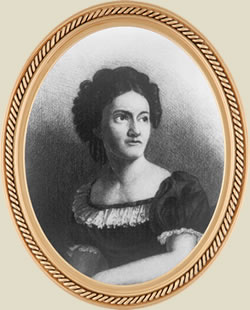
Child’s progressive conclusion that children’s writing should be both instructive and engaging informed her work as an editor and author. Her young admirers included Thomas Wentworth Higginson (1823–1911), Louisa May Alcott (1832–88), and the transcendentalist and abolitionist hymn writer Samuel Johnson (1822–82). In letters written to Child, Johnson thanked her for her writings: “Little can you conceive,” he boldly stated, “how many men & women … you have now been teaching the grand possibilities that come of fearlessly following the best conviction & the best impulse.” After the failure of the Juvenile Miscellany in 1836, Child would spend most of her remaining career writing for adults. But her briefly popular magazine contributed to a shift in children’s writing that benefitted and delighted generations of young readers.
Born in Medford, Massachusetts, Lydia Maria Child (1802–80) was known for her work as an abolitionist and women’s rights activist as well as a prolific and influential author of novels, articles, advice books, and children’s literature. Associating herself with writers and publishers in Boston—including Sarah Josepha Hale, William Ticknor, Margaret Fuller, Elizabeth Peabody, and Bronson Alcott—Child made good use of the time she spent in the city, greatly expanding her literary imagination and growing as a writer and activist. Tireless in her advocacy of political and social reforms, she brought a passion for teaching to her writing for readers of all ages.
Child’s progressive conclusion that children’s writing should be both instructive and engaging informed her work as an editor and author. Her young admirers included Thomas Wentworth Higginson (1823–1911), Louisa May Alcott (1832–88), and the transcendentalist and abolitionist hymn writer Samuel Johnson (1822–82). In letters written to Child, Johnson thanked her for her writings: “Little can you conceive,” he boldly stated, “how many men & women … you have now been teaching the grand possibilities that come of fearlessly following the best conviction & the best impulse.” After the failure of the Juvenile Miscellany in 1836, Child would spend most of her remaining career writing for adults. But her briefly popular magazine contributed to a shift in children’s writing that benefitted and delighted generations of young readers.
